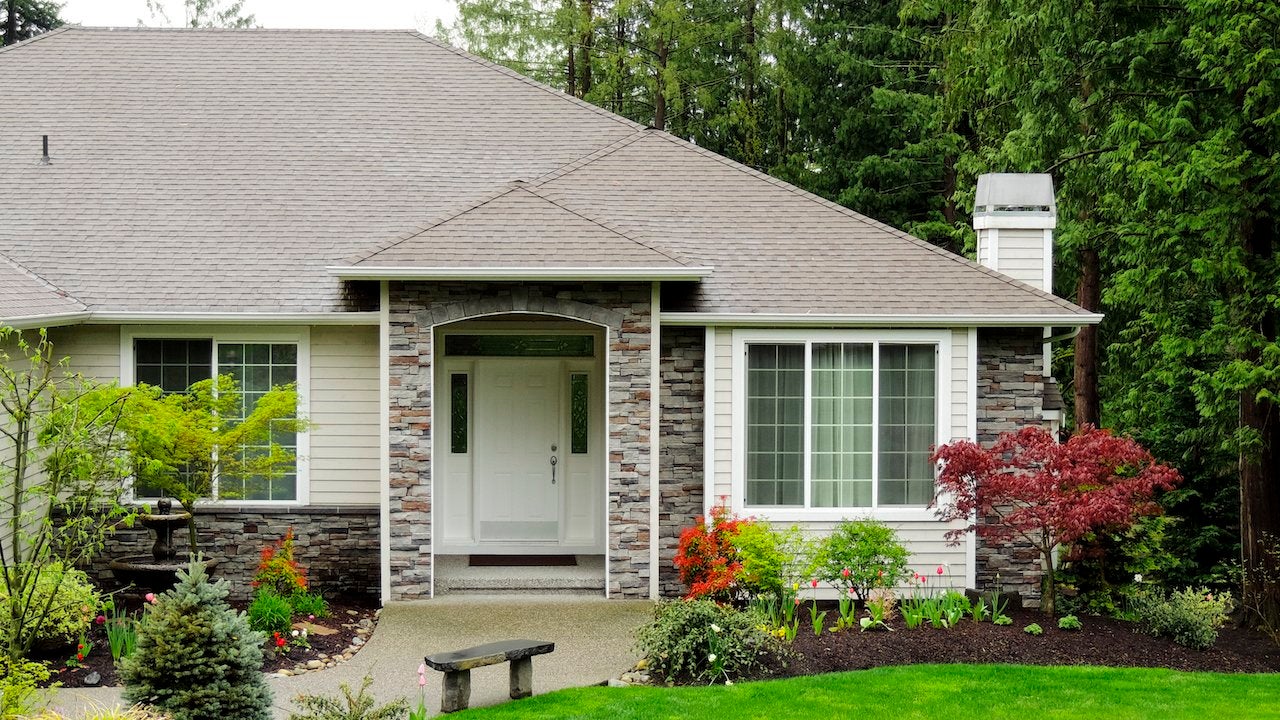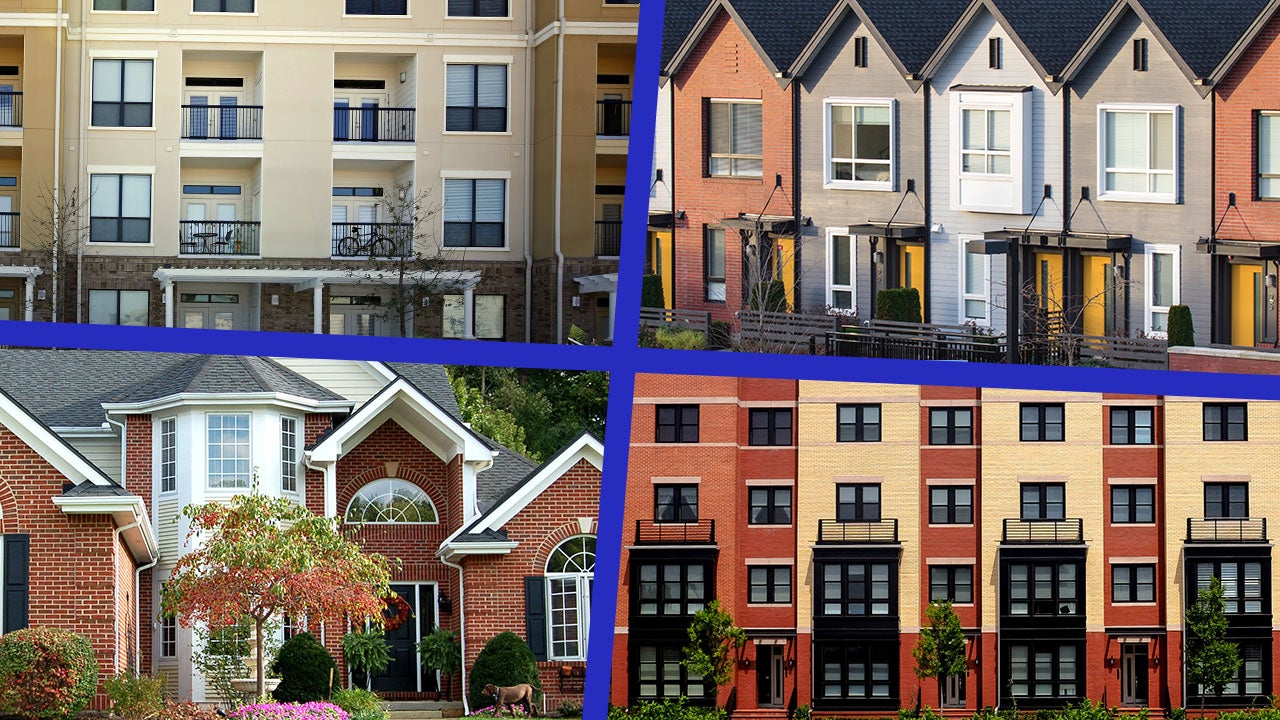Housing options that redefine what ‘home’ means

Key takeaways
- Single-family home prices have soared in recent years, making a home purchase very challenging for budget-conscious buyers.
- Many buyers are now thinking outside the traditional box, including moving far away and co-buying with friends or family.
- Starting small, with a condo or multifamily unit, means you can start building equity while you continue to save for your dream home.
Home — if you believe a familiar adage on greeting cards — is where the heart is. However, today’s housing market is often so hard to navigate that trying to purchase a place of your own can give you heartburn. With prices hitting new record highs and the number of available homes still too low to meet demand, many potential buyers have chosen to wait things out on the sidelines rather than battle an ultra-competitive housing market.
But creative house-hunters, and particularly young first-time buyers, have hit upon another solution: Expand your definition of what a “home” can be. In other words, a traditional, freestanding house all to yourself is not the only homeownership option out there. Here, we explore what makes home affordability such a challenge, and alternative housing options that can help make a purchase more achievable.
Home affordability for traditional single-family houses
In June, the median sale price of an existing single-family home was a shockingly high $432,700, according to data from the National Association of Realtors (NAR). How did we arrive at a state where affordability is so challenging? The answer is rooted in a fundamental law of economics: There isn’t enough supply to meet the demand.
Many current homeowners are locked in at super-low mortgage rates that give them no incentive to move, considering today’s much higher rates, and builders aren’t constructing brand-new homes fast enough to keep up. This has resulted in an ongoing housing shortage. “The pace of new construction is even lower than where it was in early 2021,” says Mark Hamrick, senior economic analyst at Bankrate. “That is likely reflective of the economics of the marketplace.”
The run-up in home prices isn’t just creating headaches for first-time buyers, either. In Chicago, Nathan Binkley, a broker with Compass, says he has seen a number of condo owners opt to sell their places with what might sound like a surprising plan: to become renters again. “They’re trying to get into a single-family home, but they look at the numbers and realize they’re kind of frozen out of the next price point,” Binkley says. “Instead, they sit on the profit they make from their sale and enjoy some flexibility, which they will need when they’re ready to move up.”
Overlooked housing options to consider
These days, more and more people are willing to redefine what “home” means to them in order to find affordable options. According to Bankrate’s 2024 Home Affordability Report, 44 percent of U.S. adults who would be willing to do something to find more affordable housing would downsize their living space. In addition, 24 percent would be willing to take on roommates or live with additional family members — and for Gen Z (ages 18-27), that increases to 38 percent.
Note: Percentages are of U.S. adults who would be willing to do something to find more affordable housing; Respondents could select more than one response.
Source: Bankrate survey, March 6-8, 2024
One of the best home-affordability solutions is fairly simple: If you’re hoping to buy a house, remember that smaller spaces cost less. Condos and townhouses are a good example of homeownership options that, along with their smaller footprints, have a smaller price tag too.
NAR’s data shows that the nationwide median condo price in June was $371,700 — more than $60,000 less than the median for single-family homes. The savings can be much more dramatic in pricier areas: In the notoriously expensive California housing market, for example, the median price of condos and townhomes in June was more than $200,000 cheaper than single-family homes.
“Go into the search with realistic expectations,” Binkley says. “There are a lot of couples who believe they absolutely need a three-bedroom place. Maybe they want a guest suite for someone who visits a few times a year. I tell them they can put their in-laws up in the nicest hotel in the city when they come to visit.”
The point is, you don’t need to jump right from renting to buying your ultimate dream house. Start small, and build equity while you save up for that dream three-bedroom in the perfect location. Beyond buying a condo, money-saving options to consider include units in multifamily homes and expanding your search beyond your ideal neighborhood — being near a hot area, rather than in it, can also result in a lower price.
Alternative lifestyle options
Some buyers are making significant changes to the way they live in exchange for a home they can afford.
Some people will choose to move to a location where home prices are more manageable.— Mark Hamrick, Bankrate Senior Economic Analyst
Some of these alternatives include:
- Making a big move: More than one-third (34 percent) of people willing to do something to find more affordable housing said they would be willing to move out of state, according to Bankrate’s Home Affordability Report. That can be a good solution, says Hamrick: “The value of a home purchase can vary widely,” he says. “Some people will choose to move to a location where home prices are more manageable.”
- Going tiny: The tiny home market is booming — you can even order one on Amazon now, assuming you have a place to put it. And accessory dwelling units (or individual living quarters on the grounds of another home, like a basement apartment with a separate entrance) can be a good starter option too.
- Buying with a buddy: Going in on a property with a friend (or a sibling, or a cousin) allows you to afford more by pooling your resources. “You can cut a lot of the costs of ownership in half,” Hamrick says. “Additionally, you may be able to qualify with more buying power and purchase a more desirable property.” On the flip side, co-buying also comes with financial risks and operational issues. “How do you make decisions about repairs and improvements?” Hamrick says to consider. “What happens if someone wants to move?”
- Becoming a landlord: If you can find an affordable one, it can pay to buy a duplex, which allows you to live in one unit while renting out the other. The steady monthly rental income can help offset your mortgage payments. But be prepared for the hard work of being a landlord: “If you’re a first-time buyer, trying to become a landlord at the same time is a lot to bite off — you have to deal with everything,” Binkley says.
- Becoming a weekend warrior: A home that needs significant work will be significantly cheaper than one that’s move-in ready. If you have the skills to fix up a fixer-upper, you can put in the sweat equity with DIY renovations that increase your home’s value over time.
Saving up for the traditional home — eventually
While some buyers may be playing the waiting game in the hopes of either home prices or mortgage rates falling, Hamrick offers a simple reminder: “None of us get to choose what the macro economy looks like.”
Mortgage rates are likely to come down over the next couple of years, he says, but it’s unclear how significantly they will fall. “It’s also an open question of whether we will see any substantial leveling out of home prices,” he says.
No home purchase should be taken lightly.— Mark Hamrick, Bankrate Senior Economic Analyst
If you’re saving for a down payment on your eventual forever home, here are a few tips to help get you those keys as soon as possible:
- Focus on building your credit: Whether you hope to start house hunting in a year or three years from now, you’re going to want to have an excellent credit score. Borrowers with the highest scores will qualify for the lowest available rates.
- Find a great place to save: Every penny counts when you’re trying to squirrel away funds for a down payment. Compare options like high-yield savings accounts, money market accounts and CDs to make sure you’re earning the maximum possible amount of interest on your nest egg.
- Set aside additional funds for closing costs: Of course, the down payment isn’t all you have to save up for. Closing costs can add thousands more to your upfront homebuying expenses, so be sure to plan ahead.
As you save, use the extra time to think about what you need in a home and what you’re willing to compromise on. No matter when you’re planning to purchase a home — or who you’re planning to purchase it with — it’s a major decision that requires careful consideration. “No home purchase should be taken lightly,” Hamrick says.
Why we ask for feedback Your feedback helps us improve our content and services. It takes less than a minute to complete.
Your responses are anonymous and will only be used for improving our website.
You may also like

What is home appreciation in real estate?





